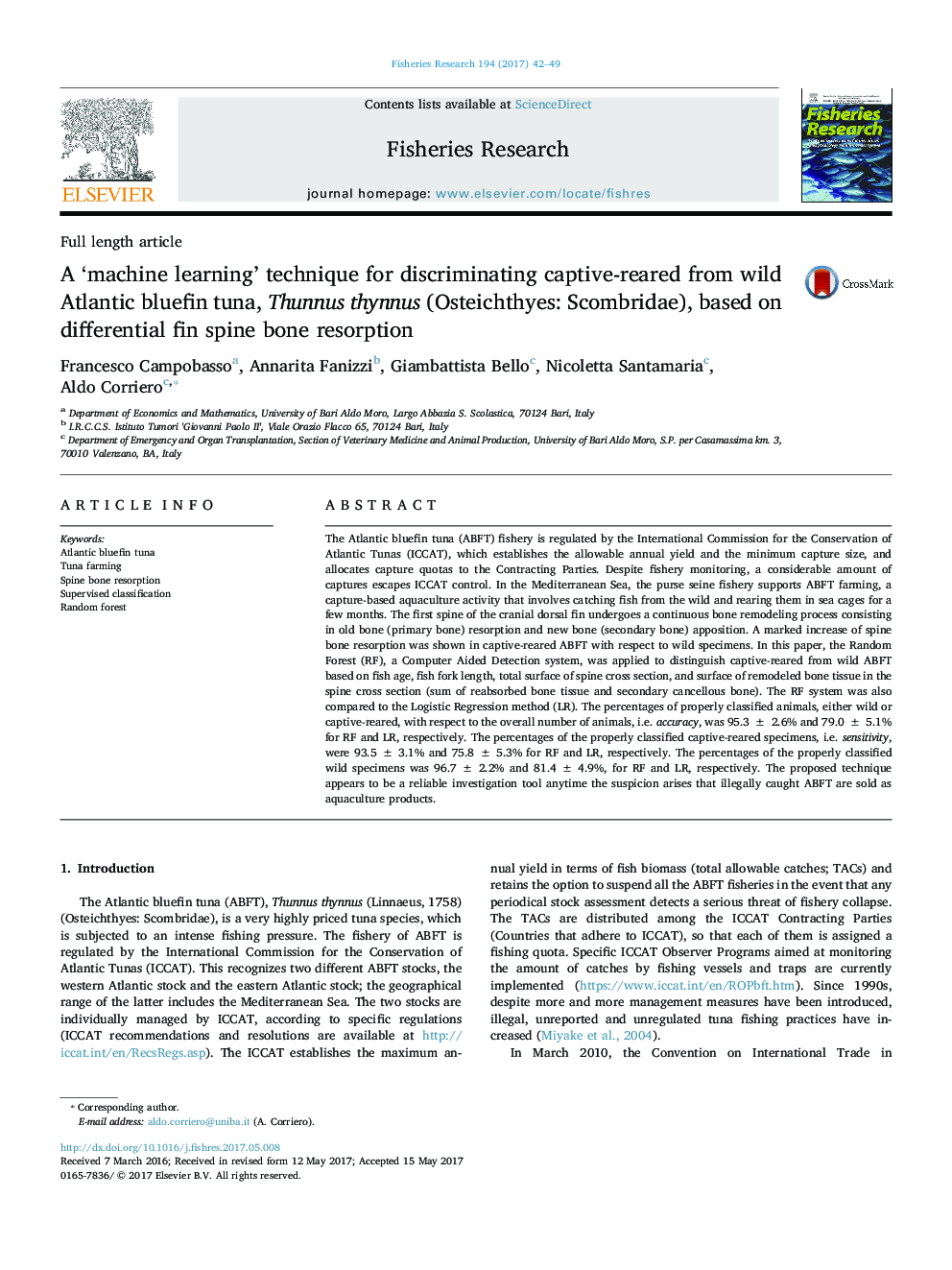| کد مقاله | کد نشریه | سال انتشار | مقاله انگلیسی | نسخه تمام متن |
|---|---|---|---|---|
| 5765412 | 1626776 | 2017 | 8 صفحه PDF | دانلود رایگان |
عنوان انگلیسی مقاله ISI
A 'machine learning' technique for discriminating captive-reared from wild Atlantic bluefin tuna, Thunnus thynnus (Osteichthyes: Scombridae), based on differential fin spine bone resorption
دانلود مقاله + سفارش ترجمه
دانلود مقاله ISI انگلیسی
رایگان برای ایرانیان
کلمات کلیدی
موضوعات مرتبط
علوم زیستی و بیوفناوری
علوم کشاورزی و بیولوژیک
علوم آبزیان
پیش نمایش صفحه اول مقاله

چکیده انگلیسی
The Atlantic bluefin tuna (ABFT) fishery is regulated by the International Commission for the Conservation of Atlantic Tunas (ICCAT), which establishes the allowable annual yield and the minimum capture size, and allocates capture quotas to the Contracting Parties. Despite fishery monitoring, a considerable amount of captures escapes ICCAT control. In the Mediterranean Sea, the purse seine fishery supports ABFT farming, a capture-based aquaculture activity that involves catching fish from the wild and rearing them in sea cages for a few months. The first spine of the cranial dorsal fin undergoes a continuous bone remodeling process consisting in old bone (primary bone) resorption and new bone (secondary bone) apposition. A marked increase of spine bone resorption was shown in captive-reared ABFT with respect to wild specimens. In this paper, the Random Forest (RF), a Computer Aided Detection system, was applied to distinguish captive-reared from wild ABFT based on fish age, fish fork length, total surface of spine cross section, and surface of remodeled bone tissue in the spine cross section (sum of reabsorbed bone tissue and secondary cancellous bone). The RF system was also compared to the Logistic Regression method (LR). The percentages of properly classified animals, either wild or captive-reared, with respect to the overall number of animals, i.e. accuracy, was 95.3 ± 2.6% and 79.0 ± 5.1% for RF and LR, respectively. The percentages of the properly classified captive-reared specimens, i.e. sensitivity, were 93.5 ± 3.1% and 75.8 ± 5.3% for RF and LR, respectively. The percentages of the properly classified wild specimens was 96.7 ± 2.2% and 81.4 ± 4.9%, for RF and LR, respectively. The proposed technique appears to be a reliable investigation tool anytime the suspicion arises that illegally caught ABFT are sold as aquaculture products.
ناشر
Database: Elsevier - ScienceDirect (ساینس دایرکت)
Journal: Fisheries Research - Volume 194, October 2017, Pages 42-49
Journal: Fisheries Research - Volume 194, October 2017, Pages 42-49
نویسندگان
Francesco Campobasso, Annarita Fanizzi, Giambattista Bello, Nicoletta Santamaria, Aldo Corriero,